General Information About Almonds Pink Foam
Almond Pink foam (also called Luiseania) is a low-growing tree or shrub up to 2 meters high. Pink-colored double flowers bloom in early spring. They densely cling to branches, attract bees, which collect pollen from fragrant inflorescences. The fruit of the almond is a drupe framed by a velvety pericarp.
Pink foam begins to bear fruit 4-5 years after planting. One tree is capable of producing 6-12 kilograms of useful nucleoli. Almonds easily tolerate severe frosts (up to -45 ° C), with good care they grow in one place for up to 100 years. He has a branched root system, which helps to strengthen the soil on the slopes.
Note! All varieties of almonds are self-fertile, so a pollinator should be added to them .
Variety description
Almond Pink foam is also called Luiseania, it is a low (height up to 2 meters) ornamental plant, resembling both a shrub and a tree in shape. In the spring, this plant densely grow and bloom pink feathery flowers.
The tree bears fruit. The name of the fruit is drupe, according to the description it has the shape of a nucleus with a velvety pericarp. The tree begins to give its first fruits 4-5 years after planting.
According to gardeners, depending on the size and age of the tree, it is possible to collect from 6 to 12 kg of useful kernels. The almond variety Pink Foam got its name from the color of the flowers.
Characteristic features of the variety:
- Differs in special resistance to frost, withstanding a drop in temperature to -45 ° C.
- The bright color of the flowers is very attractive to bees, which, as a result, collect pollen well.
- Does not require special conditions for growth, not whimsical to care for.
- Due to its decorative appearance and spectacular pink flowering, it will perfectly decorate any garden or courtyard.
- The fruits have many vitamins.
- The large roots of the tree prevent soil collapse.


Is Almond Pink Foam Edible
The kernels of this ornamental shrub are edible. They can be used ground as a condiment that will add a unique flavor to your dishes. When eating, it is important to consider the fact that, like any nut, this species is an allergen.
Almond flowers
Three-lobed almonds are often planted in home gardens because of the beauty of flowering. Flowers densely cover the branches, have a bright pink color. The flowering structure is lush, velvety buds. The plant is often called the steppe sakura because the flowers are similar to miniature roses.
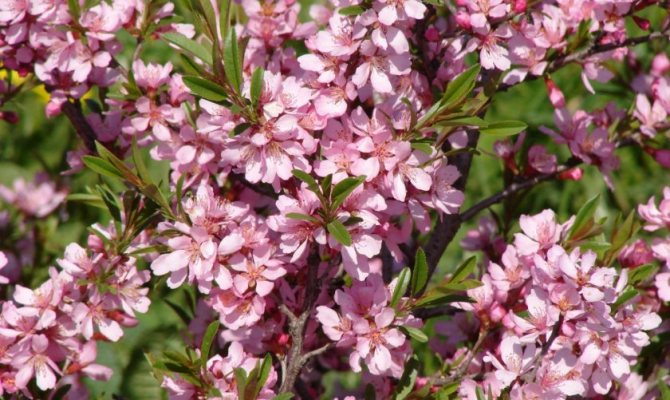

Advantages and disadvantages of the variety
The Pink Foam shrub has the following positive qualities:
- attracts bees;
- its fruits are a storehouse of vitamins;
- great frost resistance;
- unpretentious in leaving;
- has a decorative appearance;
- protects slopes and ravines from spreading.
Disadvantages include shading intolerance, susceptibility to disease when grown in areas with damp winters. In addition, when cultivating the variety in the northern regions, the fruits may not have time to ripen.

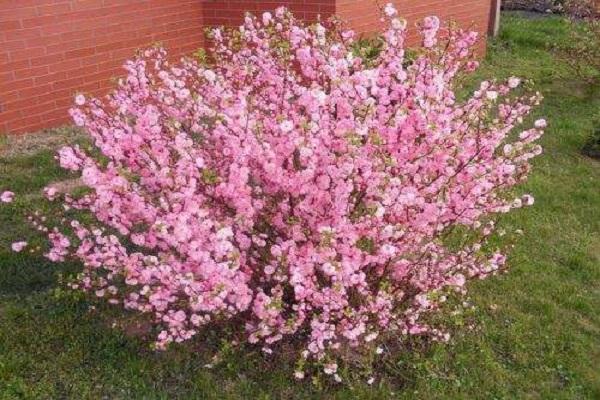
How to trim almonds (video)
Almonds are the closest relative of the garden plum, but are much more often used in the decoration of the local area or country landscape. A blooming culture with beautiful fragrant flowers resembles a peach tree, and its undemanding care allows even inexperienced gardeners to grow it.
| Print Press Print or CTRL + P to print the page | 4.25 Rating 4.25 (2 Votes) |
Features of growing a plant
The further growth of the plant will depend on how correctly the time and place of planting, as well as the planting material itself, will be chosen. Correct planting and caring for almonds Pink foam is the key to decorative planting.
Time and place
Young plants can be planted in open ground twice a year: in spring, after the establishment of warm weather, and in autumn, when leaf fall ends. The seedlings will tolerate autumn planting easier. The landing site should be brightly illuminated by the sun for almost the entire day: shading by neighboring trees is permissible for no more than 3 hours.
The soil in which the almonds are planted should be light, permeable to water and air. In heavy soil, the plant will quickly die. The best option: sandy loam or loamy soil, fertilized with nutrients. In the area where almonds will be planted, groundwater should not be close to the soil surface.
See also
Description of varieties of three-lobed almonds, planting and care technologyRead


Selection of planting material
When choosing a seedling, you need to pay more attention not to the height, but to its root system. The less it is damaged, the faster it adapts and the better the plantation will grow. In addition, small sucking roots should be present on the root of the plant being purchased. It is they who serve as the main supplier of water to the above-ground part of the plantation.
The roots of the almonds sold should be moist: wrapped in a wet rag or placed in a bucket of water or wet sand. You should not buy a plant with spots on the bark – this is a sign of a disease. It is also not recommended to buy a seedling if gum is flowing on it: it is probably affected by pests or disease.
Advice! It is necessary to purchase seedlings in nurseries or from trusted sellers .
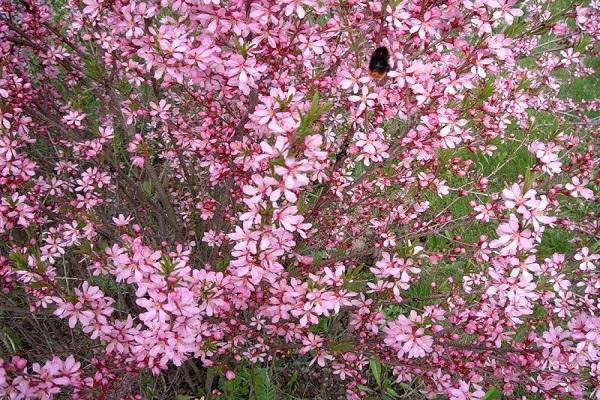

The planting process
Almond planting technology step by step:
- A hole is dug 50 centimeters deep.
- At its bottom, drainage is laid, consisting of expanded clay, fine gravel, sand.
- Then a layer of substrate is poured, the roots are gently straightened on it.
- Fertile soil is poured so that the root collar is 10 centimeters below ground level.
- The root circle is watered with water, then mulched with peat or rotted manure.
In order for young plants to grow evenly, not to bend from the wind, you need to install small supports made of metal or wood next to them.
Outdoor planting
Before planting this variety in open soil, it is important to choose the right place and good soil. The soil at the place of growth should be quite soft, loose (ideal options are loamy and sandy loam soils).
Water and air in such soil will flow to the rhizome without any problems. The growth of this variety is not possible in heavy soil. It is also important to try to grow the tree in a location where the underwater water is as close to the surface of the earth as possible.
Terms of planting
Planting can be carried out twice a year – in spring, in May, when the air temperature will be warm enough, and in autumn, at the end of October, when the trees will shed their foliage. Gardeners, guided by personal experience, recommend planting seedlings in the fall . It is at this time that young seedlings tolerate planting more easily and are better accepted.
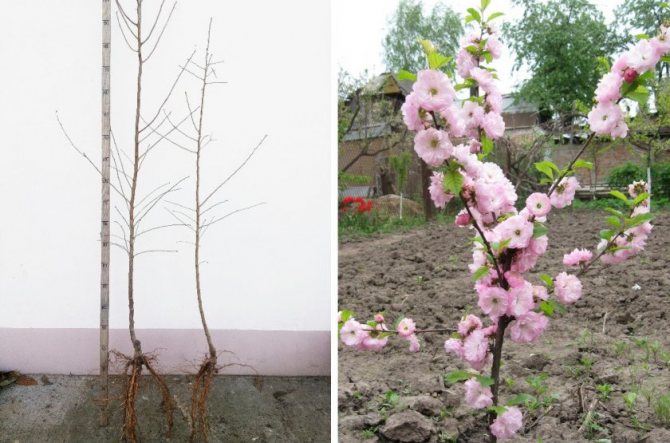
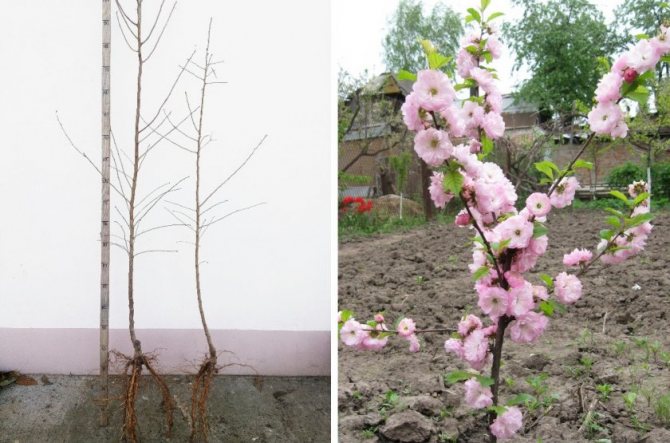
Preparing the seat
Its growth, development, fruiting will depend on the correct planting site for this variety of almonds. The most important condition for this choice is an open, well-lit area . Darkening of this variety by neighboring trees is unacceptable.
Shade is possible only 3 hours a day. You also need to take into account that the landing site should not be in a large draft. Strong winds have a detrimental effect on the tree and can break off branches.
Landing scheme
Step-by-step stages of planting an almond tree (finished seedling):
- Prepare a hole of the required size, 30-50 cm deep (depending on the size of the root).
- Place drainage from pulp, expanded clay with the addition of sand at the bottom.
- On the drainage, you need to pour a substrate fertilized with manure, distribute and spread the roots well on it.
- Cover with a ball of soil, but make sure that the root collar is at a depth of 10 cm from the surface of the earth cover.
- The distance between trees should be 3 m, between rows 5-6 m;
- Water the landing site well (10-15 liters), if possible mulch the root zone with peat.

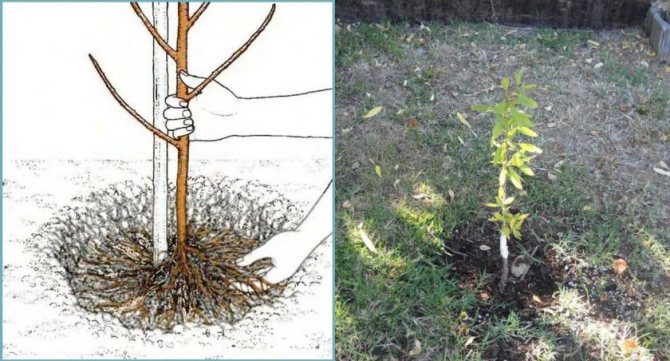
In order for the trunk of the future almond tree to be even, after planting it must be tied to a support (wooden, metal).
Care instructions
To maintain a decorative appearance, pink foam almonds must be looked after: fed, watered in time, and pruned.
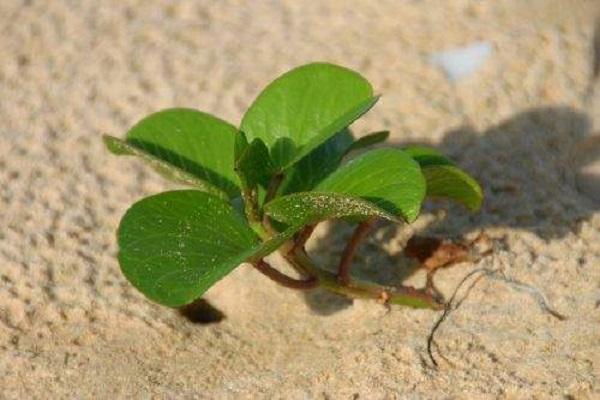
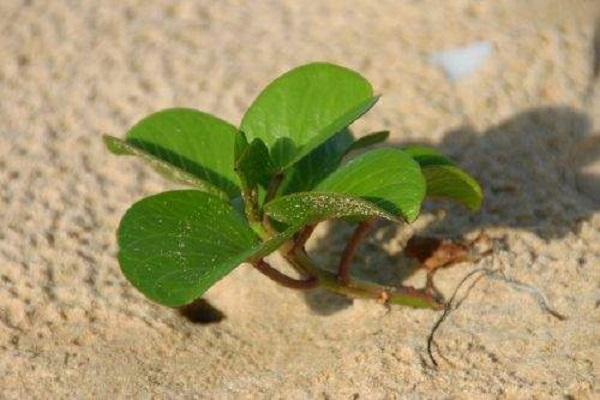
Soil fertilization
Almonds are fed several times during the season. The first top dressing will be mulch from rotted manure. It will not only retain moisture, but will also give the roots food when watering. After 2-3 weeks, the bush is spilled with fertilizer of the following composition:
- 10 grams of urea;
- 20 grams of ammonium nitrate;
- 10 liters of warm water.
In autumn, almonds are fed with a dry mixture consisting of the following components:
- 20 grams of double superphosphate;
- 20 grams of potassium sulfate.
This mixture is sufficient to fertilize an area of 1 m².


Watering rules
Almond pink foam is watered as needed. On sandy soils, for example, this is done more often, as the water evaporates quickly from them. A heavier substrate is less hydrated. A deficiency and an excess of moisture are equally harmful to a plant. One almond bush consumes 7-10 liters of water.
Trimming
The first pruning in the current season is done in the spring, before the sap flow begins. At the same time, damaged, broken, dry branches are removed. In addition, if the shoots are competing, thicken each other, then a strong, healthy branch is selected, and the other is cut out. When the pink foam has faded, formative pruning is started: not only will it not hurt, but vice versa, it will contribute to better flowering in the next season.

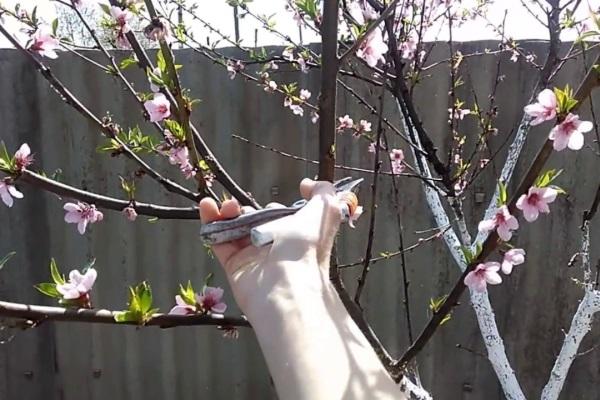
Plant protection from diseases and pests
In order to prevent diseases of almonds, it is necessary to properly care for them: remove diseased branches, prevent thickening of the crown, remove foliage and weeds from the root circle, do not overmoisten the soil. When a plant is damaged by diseases, it is sprayed with Bordeaux liquid, antifungal drugs.
See also
Planting, growing and caring for hazelnuts in the open field, variety selection and reproductionRead
In case of an invasion of pests, various insecticides are used. If the almonds did not have time to be too exposed to the raid of harmful insects, alternative methods of treatment can be used against them: infusion of tobacco, potato tops, a solution of laundry soap. To prevent the appearance of the bark beetle, the trunks of the almonds are whitewashed with lime.
Important! When using chemicals, it is necessary to protect hands with gloves, respiratory tract with a respirator or gauze bandage, eyes with glasses .
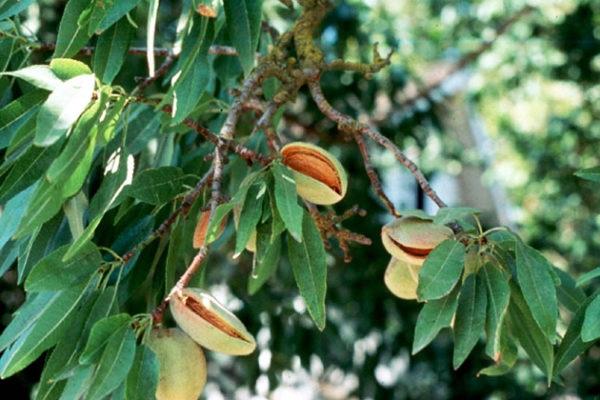
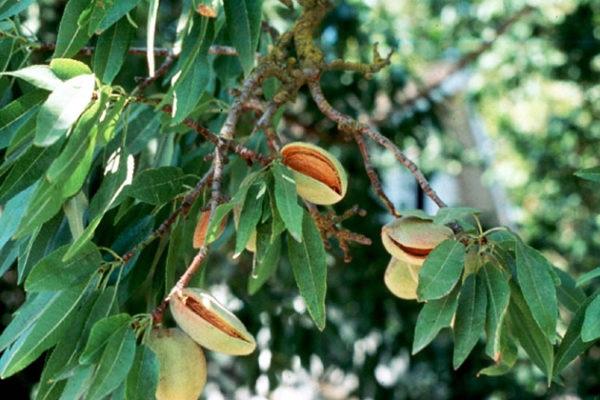
Reproduction of pink almonds
There are several ways to dilute pink foam almonds: budding, seeds, layering.
Budding
You can inoculate Pink foam on plums, cherry plums, bird cherry, and other varieties of almonds. The procedure is performed in April or August when the weather is cool. Vaccination is performed as follows:
- Dust and dirt are removed from the stock with a rag.
- At a distance of 10 centimeters from the root collar, a T-shaped incision is made on the trunk with a knife.
- The incised bark is retracted to the side.
- A small strip of bark with a bud and wood is cut from the Pink Foam.
- The shield is inserted into a previously prepared incision. It should fit completely into the slot.
- The edges of the bark are pressed, which are then wrapped with tape, electrical tape or plaster in 3-4 circles.
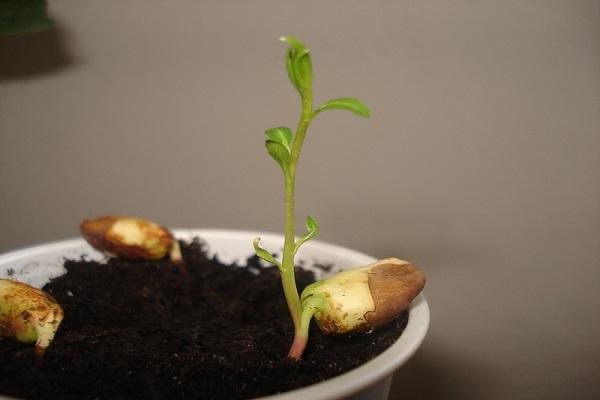
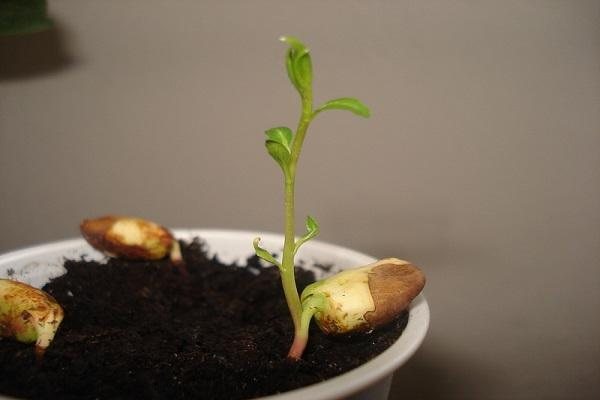
It is necessary to pay attention that the kidney should not be closed in this case. With spring grafting, the tape is slightly weakened after 2 weeks, after the appearance of foliage, it is removed. In autumn budding, the dressing is left on the plant until spring. All shoots appearing on the rootstock are removed
Additional Information. Almonds are used as a rootstock for peaches and apricots, which are more sensitive to weather conditions.
seed
To propagate the plant with seeds, they are purchased from a flower shop or kernels from mature almond trees are used. When planting in spring, seeds require stratification (keeping them at low temperatures) for 3 months. For this procedure, you can use the refrigerator. In the fall, the seeds are planted in open ground immediately after harvesting.
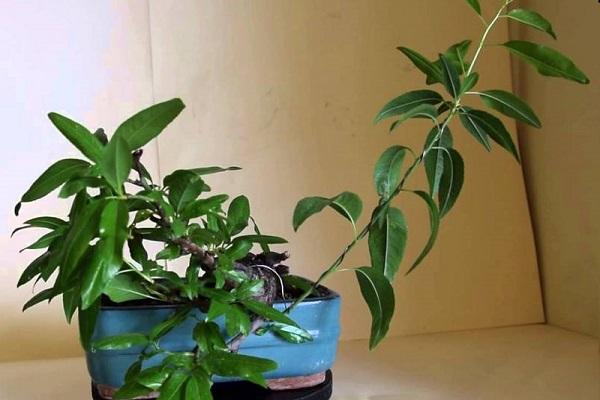
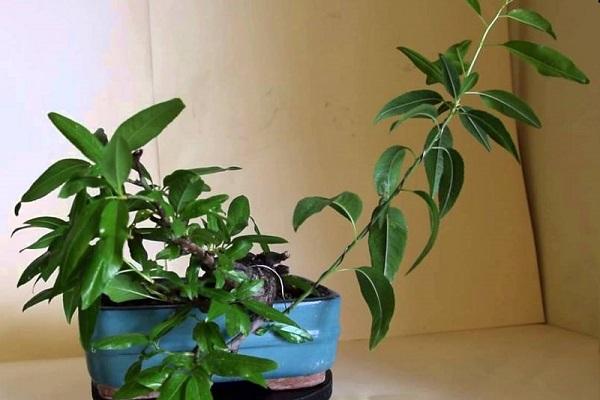
Layering
Reproduction by layering is done as follows:
- the lower branches are bent to the ground, fixed with a wire twisted in the form of an arc;
- from above, the attachment points are sprinkled with earth, watered;
- after 1 year, the rooted cut is dug up, transplanted to a new place.
Throughout the year, it is necessary to constantly water, loosen, weed the rooting site of the cuttings.
Almond Pink foam is used as a great decoration of the local area. It is decorative, unpretentious in maintenance, frost-resistant, for which we love landscape designers and gardeners. Following the recommendations for growing almonds, every summer resident and gardener will be able to grow it on his site without much difficulty.
Decorative almonds in landscape design
In order to preserve the decorative attractiveness of the curtains for a long time, shoots that are more than seven to eight years old should be periodically removed. Such varieties as “Anyuta”, “White Sail”, “Dream”, “Pink Mist” and “Pink Flamingo” have received the best reviews from gardeners in the middle zone of our country.
Almond Pink Foam is a rather moody plant
Features of the variety
Almond pink foam will be an excellent solution for transforming a land plot. Its pink color will add tenderness to an ornamental garden in spring and summer. Many people compare this shrub to the Japanese cherry tree because of the similarity of the flowers. They are located on a branch in pairs, giving the plant splendor and volume. Each flower has a diameter of 2 cm and resembles a rose.
Read more: Grapes Kesha Talisman description of the variety planting and care pruning cultivation
The height of almond pink foam is usually less than 2 meters. It begins to bear fruit as early as 4 years after planting. Resistant to severe frosts (up to -45 ° C), easily tolerates winter. The practical benefit of almonds is that its root system firmly strengthens soils near cliffs and slopes.
The variety has very attractive flowers.
Luiseania, or another name for Pink Foam, is an ornamental almond that grows as a small tree or shrub. This culture came from Northern China; tourists brought it to Europe in the nineteenth century.
The plant is thermophilic, so it should be planted in an area where there is a lot of sunlight. Frost-resistant varieties have recently been bred, but they require maximum care and special agricultural technology.
Due to dampness, the bushes are more often attacked by insects, which leads to disease and death.
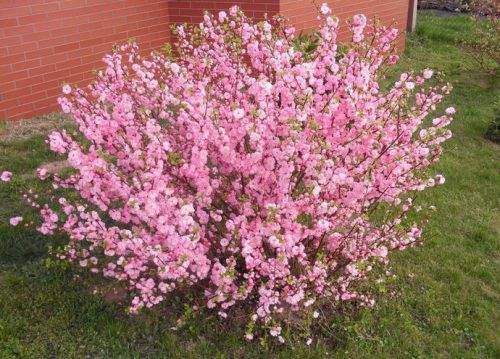

The plant is very beautiful, the height of the tree is no more than two meters. In the middle of spring, fragrant and lush inflorescences appear. The flowers are bushy and have bright shades of pink. In the fourth year, fruits appear.
A feature of such almonds is the self-destruction of old shoots and their replacement with root shoots, as a result the plant becomes strong and can be planted singly.
Place almond seedlings in deep holes. Their width depends on the length and location of the roots. Each bush must be straightened, carefully laid in a horizontal position.
Almond seedling should be placed in a sunny location
Almonds are a low, densely branched tree or shrub with a rounded or pyramidal crown. Most species reach a height of 3–6 m. The trunks are thin, no wider than 10–15 cm, covered with dark brown or brown, slightly wrinkled bark. The root system is powerful, penetrates into the ground to a depth of 4–5 m. Young shoots are long, reddish. The skeletal branches are shorter.
Leaves are simple petiolate, lanceolate, finely toothed, with pointed tops. The length of the plates is 7–10 cm, the upper part is dark green, smooth, with feathery veins, the lower part is slightly lighter.
Flowers are bisexual, solitary, sessile, 1-3 cm in diameter, white, cream, pink or light red shades, with a pronounced bitter aroma. The cups are goblet, five-petal, with many stamens and one pistil. Ornamental varieties have double buds. Almonds bloom profusely and relatively early: from the beginning of April, when there are no leaves on the branches.
Depending on the species, almond shells are hard or soft. The thicker it is, the larger the fruit kernels contained inside.
Peeled almonds are covered with a yellowish or brown film, the pulp is light, oily, in cultivated varieties – nutritious, with a delicate taste and aroma.
Greens, flowers and fruits of almonds contain the potent substance amygdalin, a component of hydrocyanic acid. In wild species, its concentration is higher.
The plant bears fruit from 5-6 years of age. The total life span of an almond tree is 80–100 years.
Varieties
Among the fruit and ornamental plant varieties, several are popular.
Ordinary
In addition to the wild variety – the bitter almond, there is a cultivated one with sweet fruits suitable for human consumption. Densely branched shrubs or small trees 4–5 m high with dark green glossy lanceolate leaves.
White or light pink flowers bloom in April. The fruits are about 3 cm in size and ripen at the end of July. The nuclei are large, elongated, bright brown in color. The yield of sweet almond varieties reaches 10–12 kg per tree. Bears fruit for about 25 years.
The largest number of fruits is found in trees of 12-15 years of age.
Low (bean)
A low-growing shrub 1–2 m high with a dense spherical or trapezoidal crown. The leaves are lanceolate, bright green, fleshy. Flowers 1–2 cm in diameter, dark pink or red. Fruiting species, kernels 1–1.5 cm in size, oily, bitter.
Bobovnik tolerates prolonged drought well, is thermophilic and is sensitive to lack of sunlight. On the basis of the species, decorative varieties with abundant flowering and large fruits were selected: Pink Flamingo, White sail, Anyuta, Pink fog.
Georgian
The natural range of the species is Transcaucasia. Georgian almonds resemble legumes, but with less dense shoots. The crowns are pyramidal, openwork. The flowers are light pink, rare, bloom in April.
Leaves are wide, with sharp tops, up to 8 cm long. Fruiting annually. More frost resistant than other species.
Unpretentious to the composition of soils, it can grow on rocky scarce soils in conditions of prolonged drought.
Almond Ledebour
Altai view. A wide, low shrub with abundant flowering. The length of the shoots is 1.5–2 m. The petals are bright pink or creamy, bloom in mid-spring before the foliage appears. Fruits 2.5 cm in size with light green, fleecy skin. The nuclei are bright brown, oblong.
Three-bladed
Central Asian thermophilic species. Lush shrub 1.5–3 m high with dense dense crowns. It blooms profusely, the buds are fragrant, light pink or crimson, 3–3.5 cm in diameter.
There are varieties with simple and double petals. The leaves are dark green, lobed, slightly pubescent on the underside, velvety to the touch.
Popular hybrid varieties of the species: Chinese woman, Ruslana, Tanyusha, Svetlana, Kievsky.
Landing
It is recommended to plant almonds in the spring, in thoroughly warmed up soil. The site should be protected from cold northerly and north-westerly winds, well lit by the sun.
Do not place the plant in the shade of buildings, tall trees or fences.
If you plan to get fruit, you need to plant several specimens – almonds are cross-pollinated and only by insects, therefore apiaries should be near.
Optimum soil acidity for almonds: 4.5–7 pH. At a higher level, lime or dolomite flour is desirable.
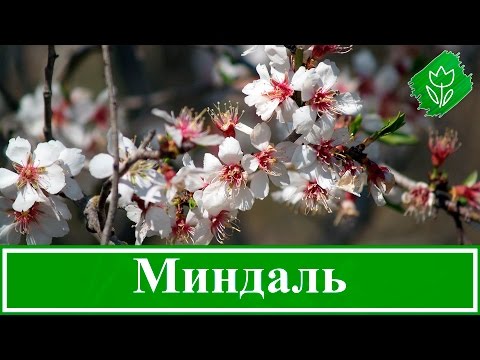

The depth of the seedling holes depends on the species. Dwarf varieties need 30 cm pits. Tall ones – about 50 cm. The distance between them should be at least 3 m. A 10-cm layer of drainage from brick chips or small stones is laid out on the bottom.
A little nutrient mixture of rotted manure and mineral fertilizer with the obligatory content of phosphorus is poured on top. The seedlings are placed in the holes so that the root collars protrude 1–2 cm above the surface. The roots are carefully covered with soil, compacting them tightly.
Immediately after planting, the almonds are watered: 10-15 liters of water per copy. It is recommended to mulch the trunks with a thick layer of peat: about 5–7 cm.
Frequency of watering young plants: once a week, 10 liters of water per plant. It is imperative to loosen the soil around the trunks of almonds to a depth of 5–7 cm if mulch is not used. Starting from the age of 3, it is necessary to moisten the bushes less often: only in dry periods, when the soil dries to a depth of 2 cm. It is impossible to water the root system.
In the early days of the growing season, almonds can be fed with nitrogen, during the summer it is useful to water it 1-2 times with a liquid solution of mullein or bird droppings. At the beginning of summer, it is recommended to add 20 g of ammonium nitrate and 10 g of urea under each bush, dissolving them in a bucket of water. In October: 20 g of superphosphate and potassium sulfate.
Young trees must be protected from frost by covering the root collar with a thick layer of leaves or peat. The crown needs to be wrapped in lutrasil. Mature plants do not need shelter.
Reproduction
Almonds are propagated by the seed method only for growing stock – trunks, on which varietal plants will subsequently be grafted. They are sown to a depth of 8-10 cm, the sprouts are watered and fed until they reach a height of 50 cm. Lateral shoots are regularly removed.
The graft must be developed, have healthy growth buds. It is grafted in the summer, placing it under the bark, in a T-shaped incision in the rootstock, at a height of about 10 cm above the root collar. Fix with a plaster or tape. In the fall, the grafting site is covered with soil.
- grafting on such fertile trees;
- cuttings and individual shoots;
- seeds.
Read more: Muscat grape varieties with descriptions and photos
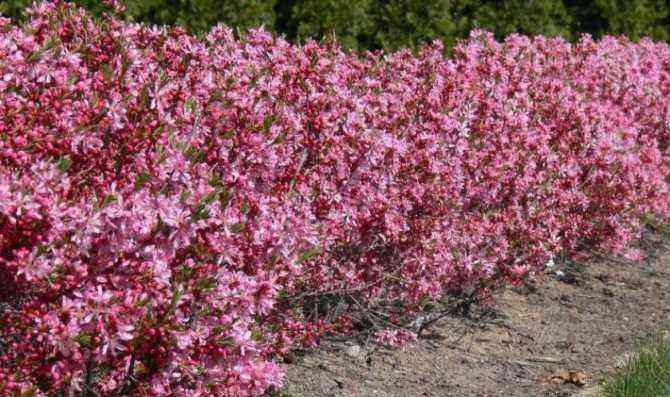
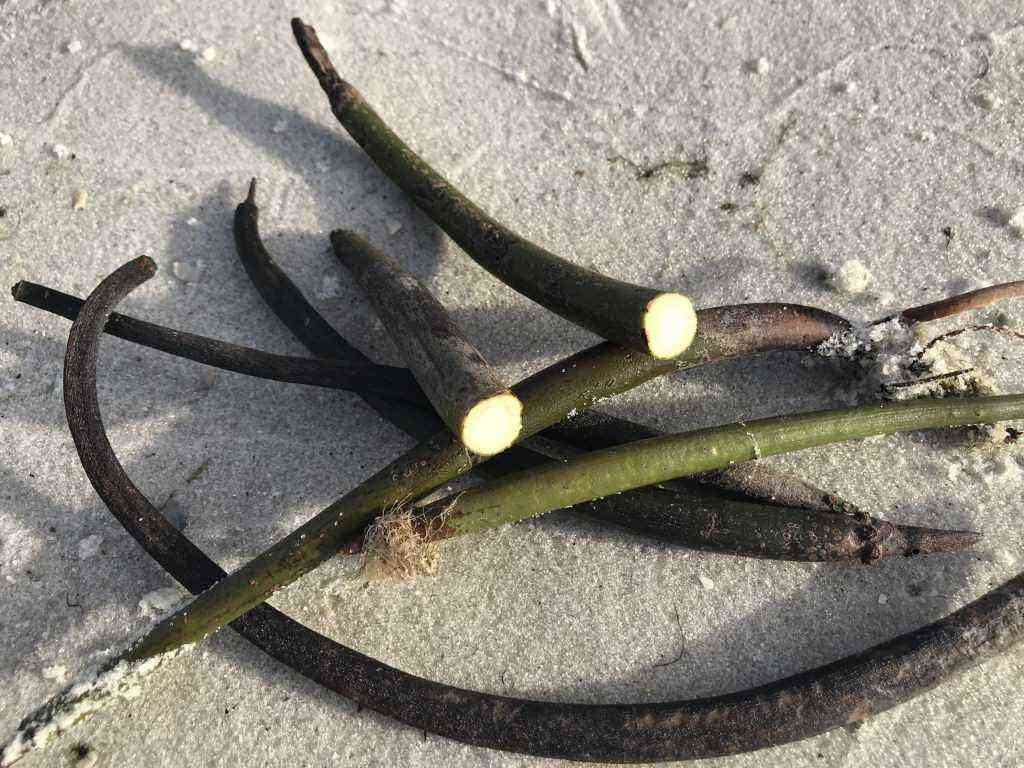
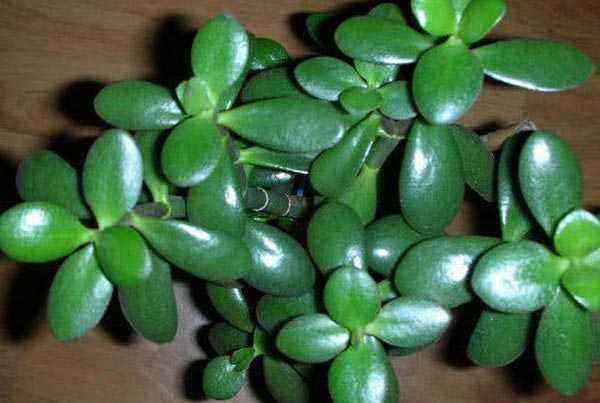






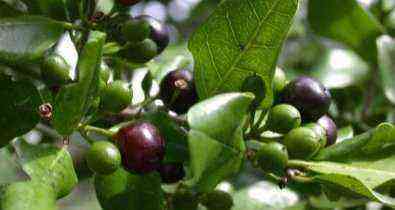

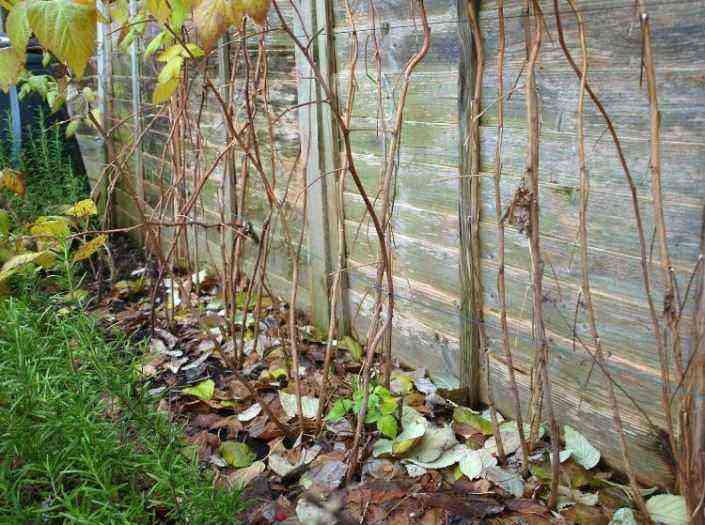
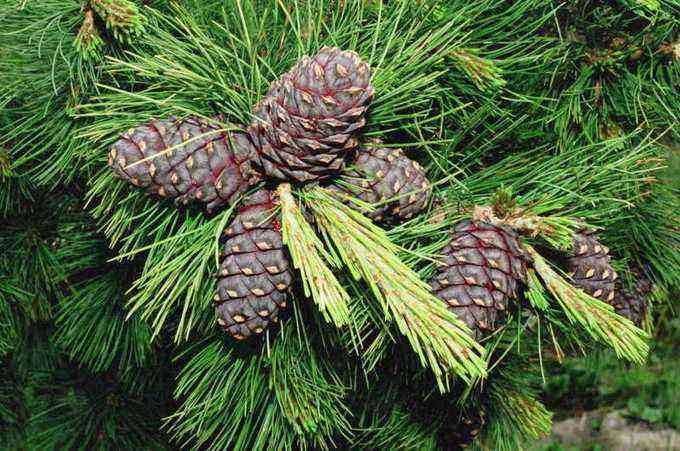

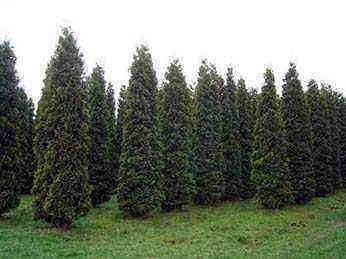
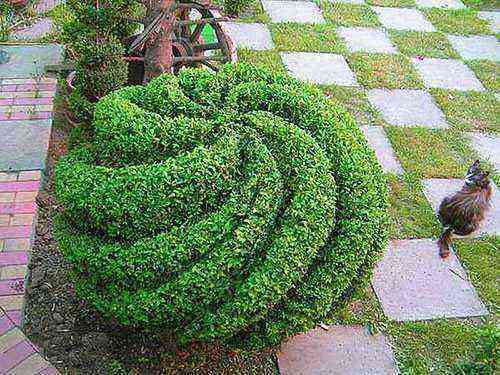
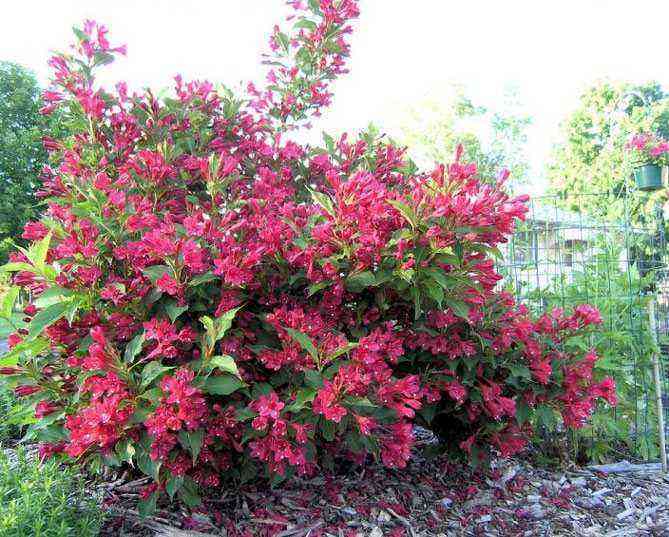
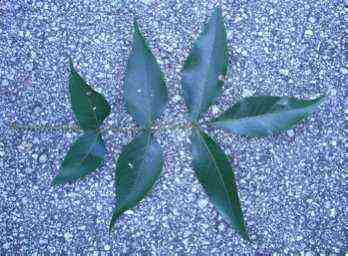
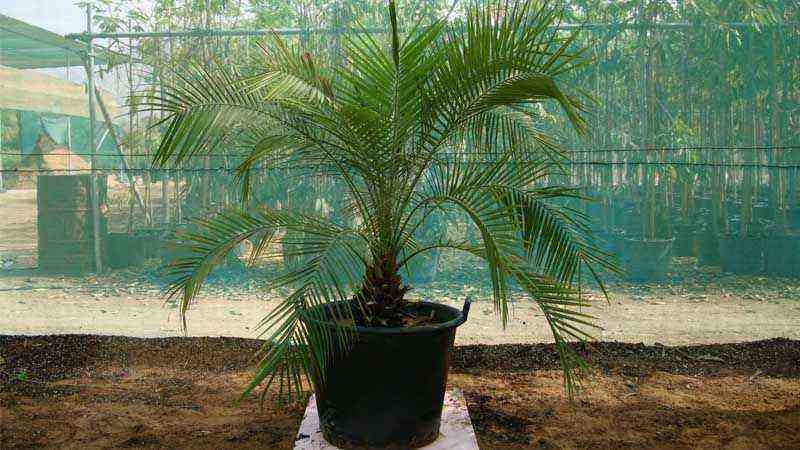

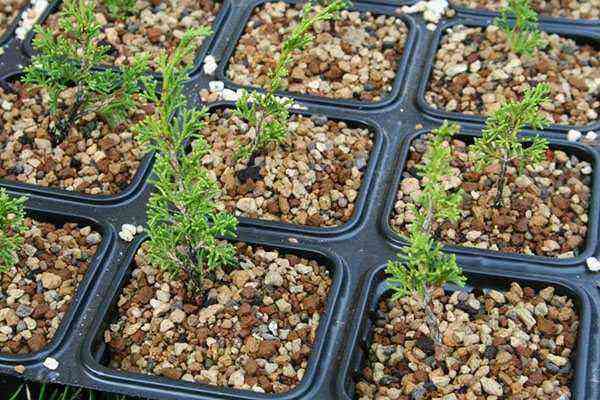
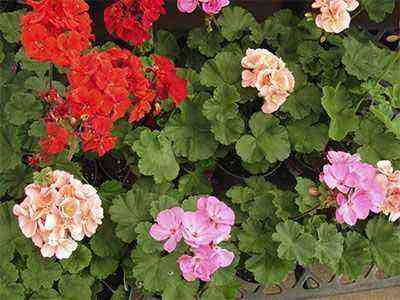

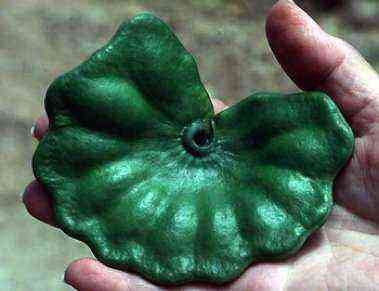

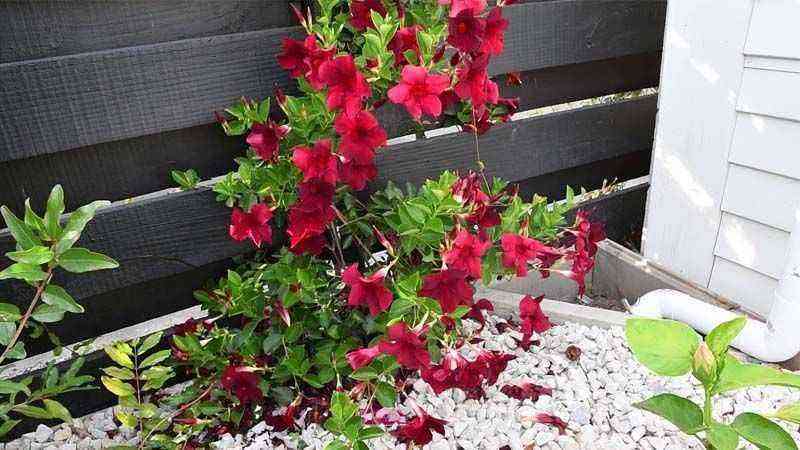
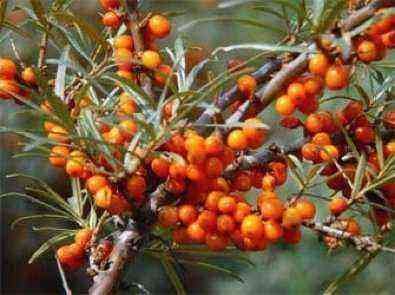

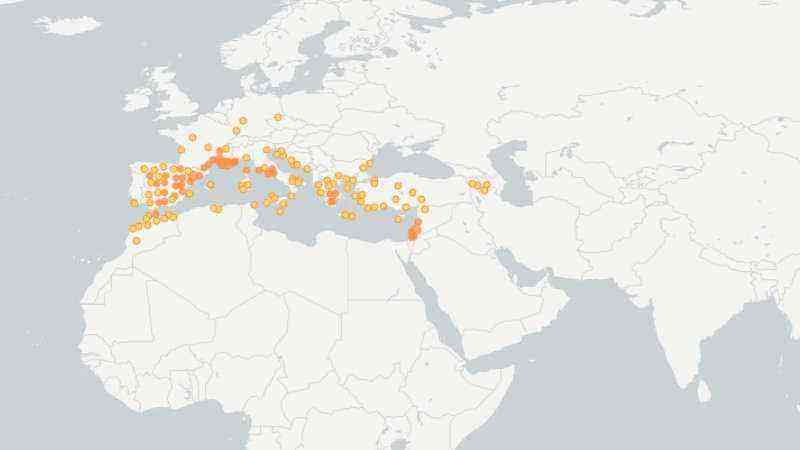
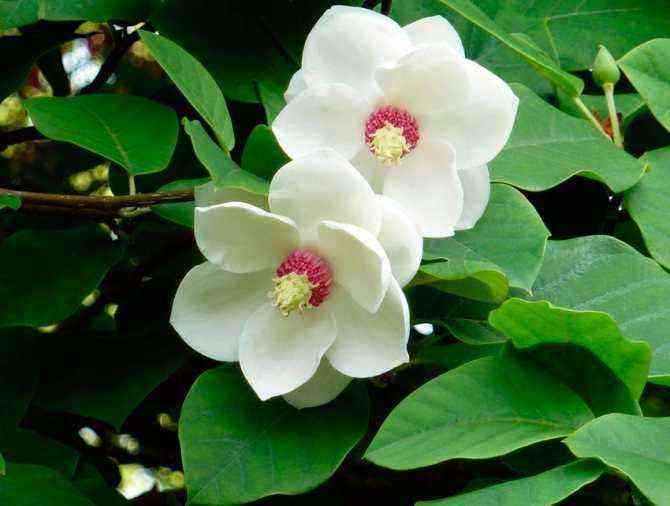
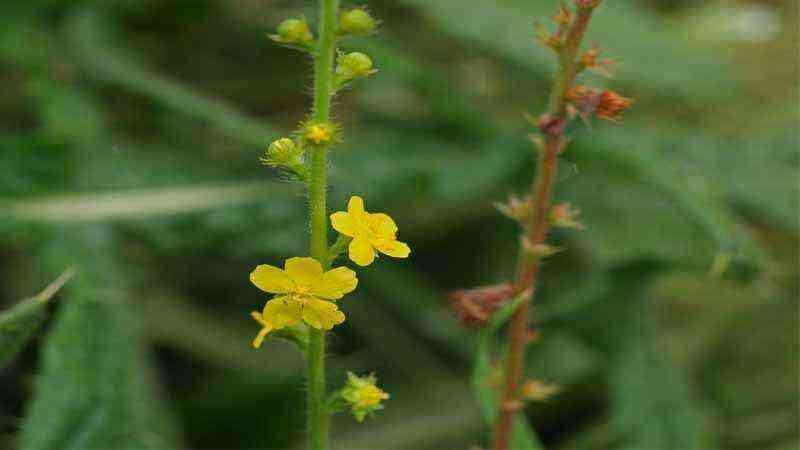
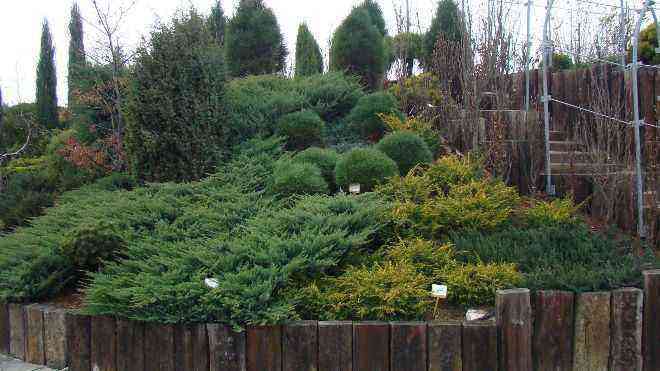
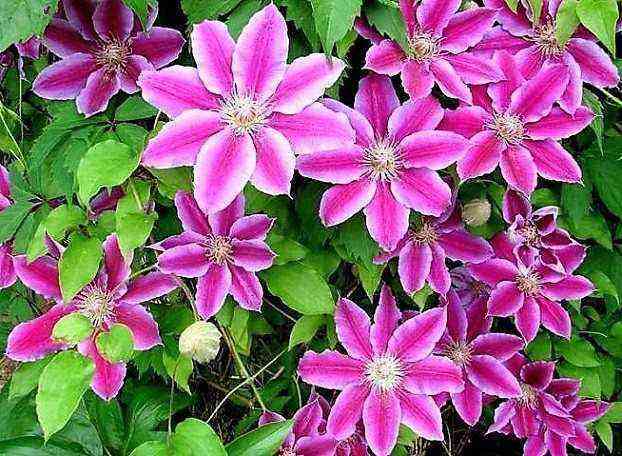
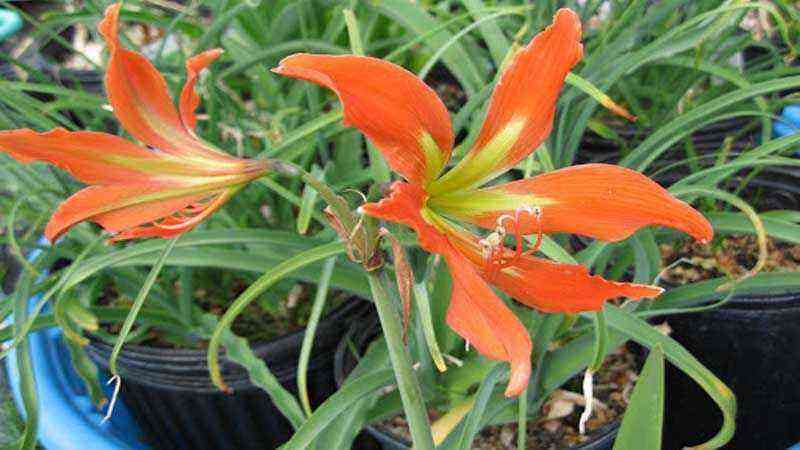

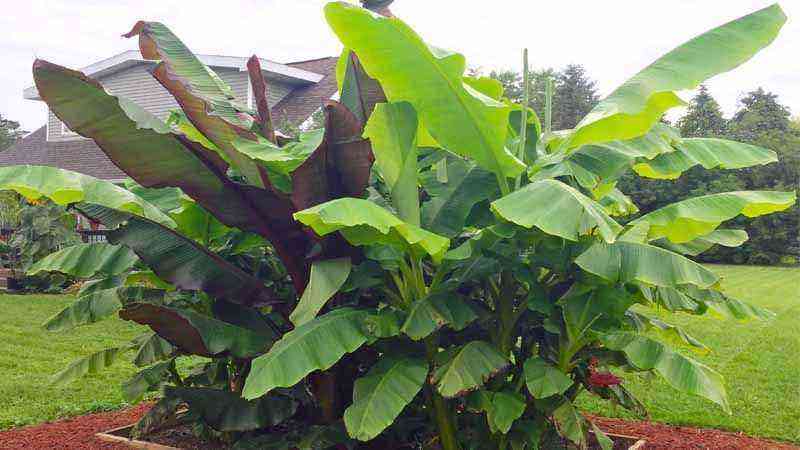

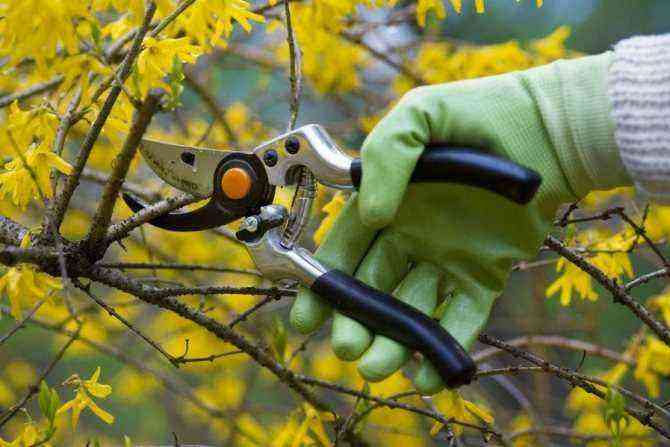
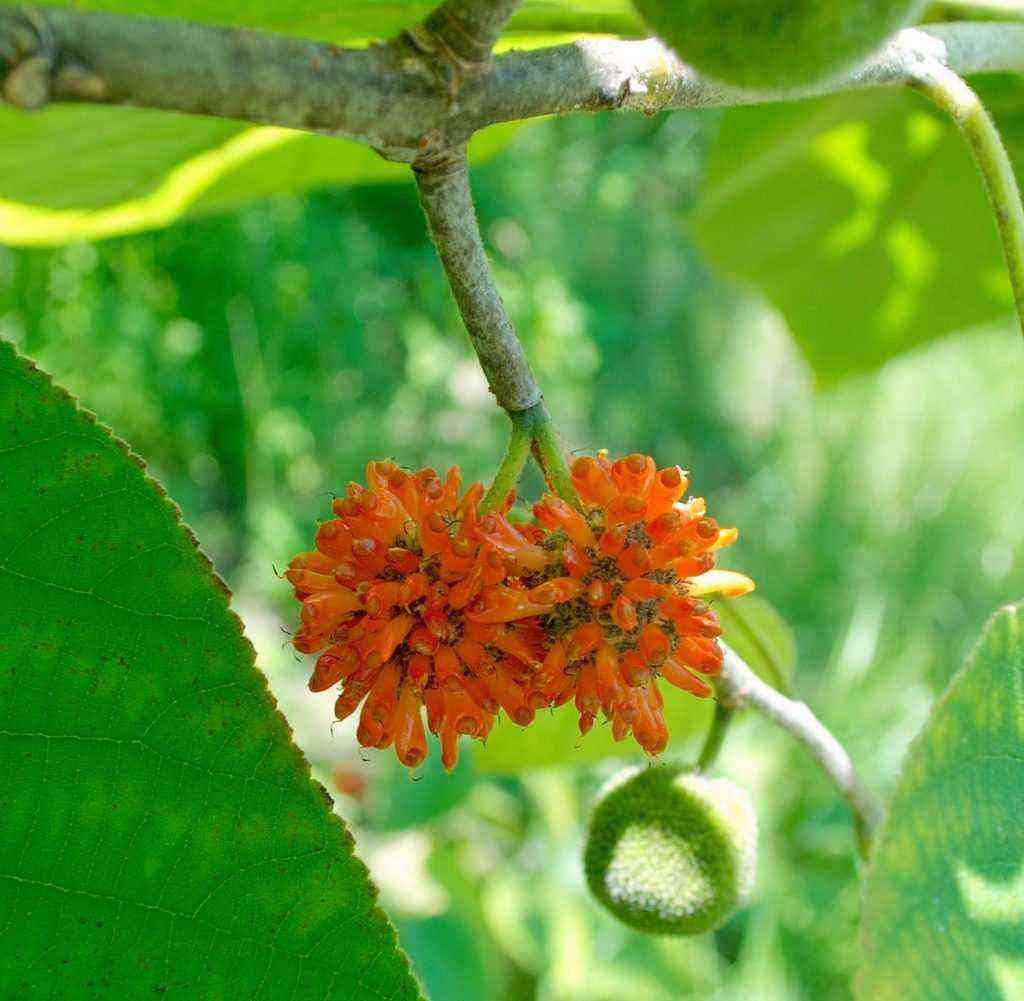

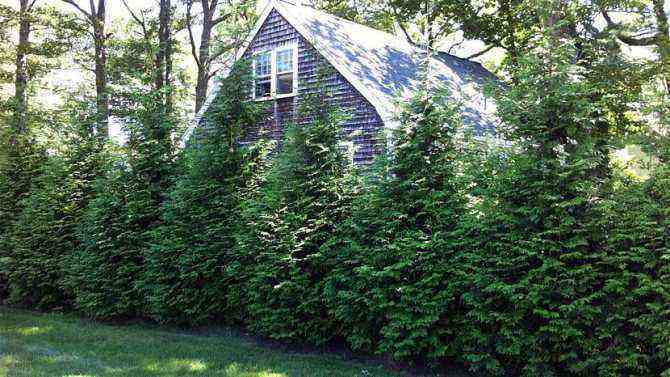
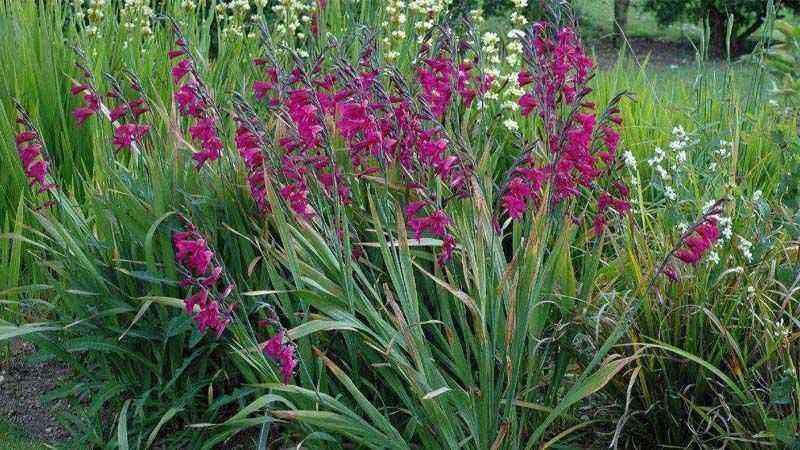
![Cultivo de Magnolia stellata [magnolia estrellada] Cultivo de Magnolia stellata [magnolia estrellada]](https://farmer-online.com/wp-content/uploads/2021/05/Cultivo-de-Magnolia-stellata-magnolia-estrellada.jpg)